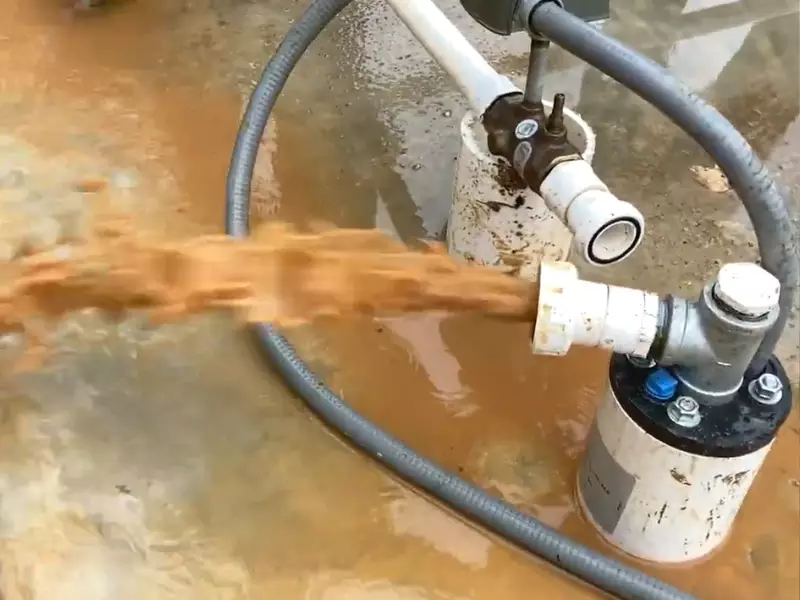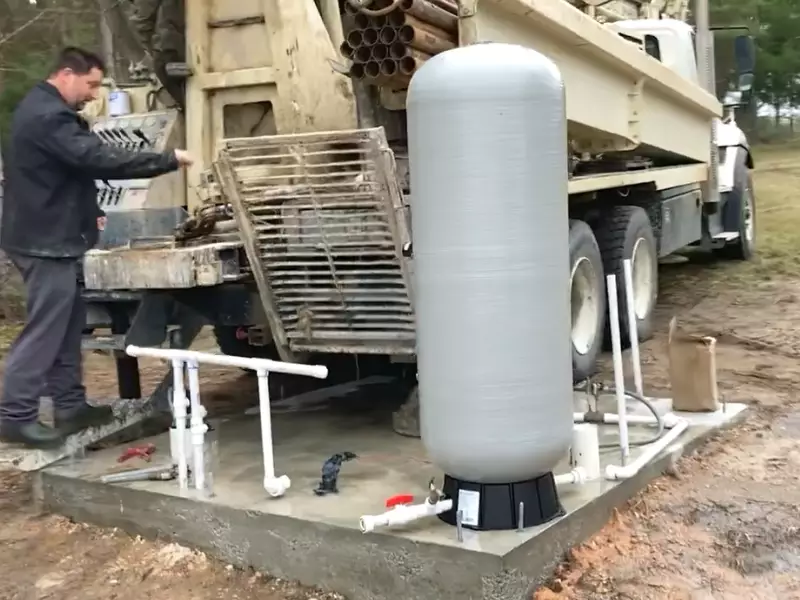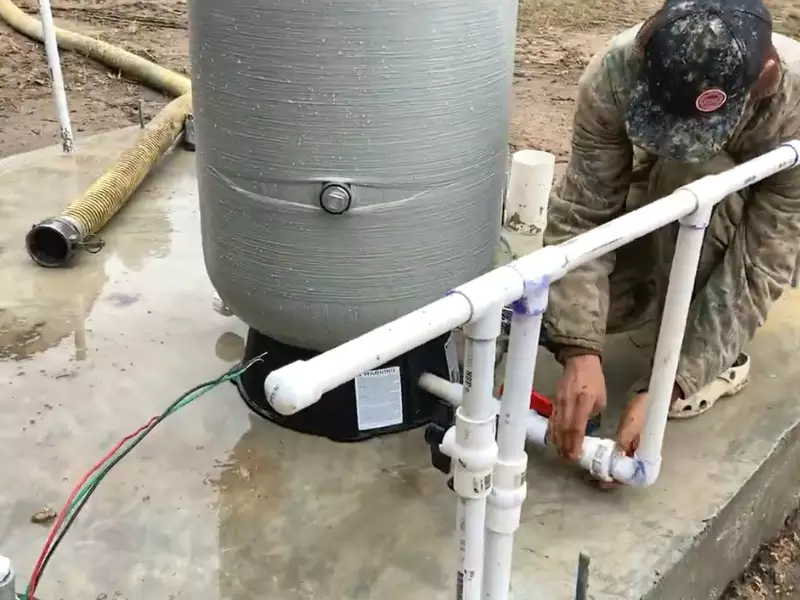Maintaining the cleanliness of a well screen is paramount for households and industries that rely on well water. A clean well screen not only ensures consistent water flow but also preserves the quality of water drawn from the well.
The health and functionality of a well screen directly correlate with the clarity and taste of the water you consume. Regular cleaning mitigates issues like sediment buildup, which can impede flow and introduce contaminants.
A well screen is an integral component of a groundwater well, filtering out larger particles and sediments, thus preventing them from entering the well. But like any filter, over time, it can become clogged and require cleaning.
What is a Well Screen?
A well screen acts as a filtering mechanism, allowing water to flow into the well while keeping out larger sediments and contaminants. Typically crafted from durable materials such as stainless steel or PVC, it’s crucial for ensuring the long-term health of the well.

Definition and purpose
- Acts as a sieve: Allows water in, keeps debris out.
- Protects the well: Prevents sediment buildup and potential damage to the well’s infrastructure.
Materials commonly used
- Stainless steel: Corrosion-resistant and offers high strength.
- PVC: Less expensive than metal options and offers good longevity.
Signs Your Well Screen Needs Cleaning
A well screen acts as the first line of defense against potential contaminants. Like any filter, it has a tendency to accumulate particles over time. Recognizing the signs of a clogged or dirty well screen can prevent more complex issues in the future.
Reduced water flow
A clear indication of a dirty well screen is the noticeable drop in water flow.
- Pressure changes: You might experience changes in water pressure, such as trickling water instead of a robust flow.
- Extended pump operations: If your pump seems to work overtime or takes longer to fill up storage tanks, it could be due to a blocked well screen.
- Increased energy bills: Reduced flow rates might cause your pump to operate longer, leading to higher electricity consumption.
Changes in water clarity or taste
Consistency in water quality is crucial. Any deviation from the norm can hint at issues with the well screen.
- Murky appearance: If your water suddenly appears cloudier or has floating particles, it might be due to contaminants bypassing a clogged well screen.
- Altered taste: A metallic or unusual taste is often indicative of mineral buildup or rust, signaling the need for a thorough cleaning.
- Smell: Sometimes, a compromised well screen may allow certain bacteria or organic matter, leading to a musty or rotten odor in the water.
Presence of sediments
Visible or tangible sediments are usually clear indicators of a screen that requires attention.
- Sediment layers: If you observe a layer of sediment at the bottom of your water container, it’s high time for a cleaning session.
- Faucet blockages: Occasionally, the sediment might accumulate and even cause minor blockages in faucets or showerheads.

Preparation Steps
Embarking on a cleaning mission requires adequate preparation to ensure effectiveness and safety.
Safety precautions
Safety should always be the primary concern when working with well systems.
- Wear gloves and safety goggles: These protect your hands and eyes from any reactive chemicals or sharp objects during the cleaning process.
- Ensure the work area is ventilated: If using chemical agents, proper ventilation prevents inhalation of potentially harmful fumes.
- Turn off electrical connections: Ensure that all electrical components connected to the well, especially the pump, are turned off to avoid accidents.
Necessary tools and materials
Having the right tools can make the cleaning process smoother and more efficient.
- Long-handled brushes: Brushes with extended handles allow for a more in-depth and thorough cleaning, especially for deeper wells.
- Soft scrubbers: These are great for delicate screens that might get damaged by harder brushes.
- Safe cleaning agents: It’s imperative to use chemicals that won’t compromise the well’s water quality. Biodegradable and eco-friendly options are usually the best choices.
- Bucket and rope: For drawing out and rinsing the screen, especially in deep wells.
Turning off the water supply
Before commencing the cleaning, it’s crucial to manage the water flow.
- Shut off the main valve: This prevents water from entering or leaving the well.
- Drain any remaining water: Ensure the system is devoid of water to facilitate a more efficient cleaning process.
Cleaning Methods
The method of cleaning you choose largely depends on the extent of the clogging and the materials your screen is made of.
Physical Scrubbing
Manual cleaning is an age-old method that can be incredibly effective, especially for minor clogs.
- Use appropriate brushes: Depending on the screen’s material, select brushes that won’t cause abrasions.
- Rinse frequently: As you scrub off debris, rinse the screen regularly to remove dislodged particles.
- Check for damages: During the physical scrubbing process, inspect the screen for any signs of wear or tears that might need repair.
Chemical Cleaning
In cases where mineral buildup or stubborn clogs persist, chemical interventions might be necessary.
- Choose the right agent: Ensure the chemical solution is suitable for your screen type. For instance, certain agents might corrode metal screens but work well with PVC.
- Follow manufacturer guidelines: Adhere to recommended dilution rates and application durations.
- Ensure thorough rinsing: Once the cleaning is complete, it’s crucial to rinse the screen several times to ensure no chemical residue remains.

Post-Cleaning Care
Your efforts shouldn’t stop once the cleaning is done. Ensuring post-cleaning care can extend the life of your well screen and maintain water quality.
Flushing the system
- Run water: Let water flow through the well and out for several minutes. This helps in clearing out any residual particles or chemicals.
- Monitor the discharge: Keep an eye on the expelled water until it runs clear, signaling that the well is free from cleaning agents and dislodged sediments.
Checking water quality
Once cleaning is done, it’s crucial to ensure the water’s safety and quality.
- Visual inspection: The water should be clear without any floating particles.
- Taste and smell test: The water should be devoid of any unusual tastes or odors. If any persist, it might require another round of cleaning or professional inspection.
Periodic maintenance tips
Consistent care can prevent the need for frequent intensive cleanings.
- Set a cleaning schedule: Based on your water source and usage, establish a routine cleaning schedule, whether quarterly, biannually, or annually.
- Regularly inspect: Between cleanings, visually inspect the screen for any obvious blockages or damages.
Benefits of Regular Cleaning
Regularly tending to your well screen presents numerous advantages.
Enhanced water quality
- Reduced contaminants
- Improved taste and clarity
Improved flow rate
- Faster water access
- Steady pressure maintenance
Extended well screen lifespan
- Reduced wear and tear
- Prevention of larger-scale damage
Frequently Asked Questions
How often should I clean my well screen?
The frequency of cleaning largely depends on the quality of the source water and the volume of water usage. However, as a general guideline, inspecting and potentially cleaning the well screen every 6-12 months is advisable for most homeowners. For areas with high sediment or mineral content, more frequent cleaning might be necessary.
Can I use household chemicals to clean the well screen?
It’s essential to use chemicals specifically designed for well screens or those deemed safe for potable water systems. Some household chemicals might leave residues that could affect water quality or harm the well screen material. Always prioritize eco-friendly and biodegradable options, and follow manufacturer’s instructions strictly.
What if cleaning doesn’t improve water flow or quality?
If cleaning the well screen doesn’t bring noticeable improvement, there might be other underlying issues with the well system. It could be a malfunctioning pump, collapsed well walls, or even deeper contaminations. In such scenarios, consulting with a professional well technician is recommended.
Conclusion
A well screen is an integral component in ensuring the purity and safety of the water we consume. Recognizing the signs of a screen in need of cleaning and taking prompt action not only guarantees better water quality but also extends the lifespan of the entire well system.
Taking the time to prepare, select the right tools, and follow effective cleaning methods ensures an efficient cleaning process. Regular maintenance, coupled with periodic thorough cleanings, keeps a well system running optimally and provides peace of mind regarding water safety.
Lastly, understanding the significance of post-cleaning care, from flushing the system to monitoring water quality, reinforces the commitment to clean, safe, and abundant water for daily use.